画像 (1-x^2)y'' 2xy'=0 y1=1 175216-(1-x^2)y''-2xy'+12y=0
Simplify x=y1 x=y1 Add y to both sides of the equation y^ {2}\left (2x\right)yx^ {2}1=0 All equations of the form ax^ {2}bxc=0 can be solved using the quadratic formula \frac {b±\sqrt {b^ {2}4ac}} {2a} The quadratic formula gives two solutions,Solution for ( 1 x2 ) y'' 2xy' 2y = 0 ;Find the specific solution for the following differential equations a) (dy/dx)^2 x^4 = 0 given the initial value y(1) = 0 b) dy/dx = ysinx given the initial value y(pi) = 1 calculus Sorry to post this again, but I am still unable to understand it and need help Please help1) Using 3(x3)(x^26x23)^2 as the answer to differentiating f(x

The Solution Of Differential Equation X 2 Y 2 Dy Xy Dx Is Y Y X If Y 1 1 And Y X0 E Then X0 Is
(1-x^2)y''-2xy'+12y=0
(1-x^2)y''-2xy'+12y=0-Y1 = x Physics Social ScienceBy this expression, we can divide over the excess two X Y Q minus four Excuse over minus tree Extra square, wire square If we divide numerator and denominator by X, then one X will be canceled on In fact, we can also take minus sign out So we're left with four X square minus two Y cube over three X y square




Use The Reduction Of Order Method To Solve The Following Problem Given One Of The Solution Y1 A X 2 1 Y 39 39 2xy 39 2y 0 Y1 X B 2x 1 Y 39 39 4 X 1 Y 39 4y 0 Y1 E 2x C X
G@ Bð% Áÿ ÿ ü€ H FFmpeg Service01wThis problem has been solved!Divide \frac{y1}{y1}, the coefficient of the x term, by 2 to get \frac{y1}{2\left(y1\right)} Then add the square of \frac{y1}{2\left(y1\right)} to both sides of the equation This step makes the left hand side of the equation a perfect square
First week only $499!RH!¦˜bÊ)§€Ð U €I' ˱ ÍÑ Íñ Ï %Q %Ñ2ÓR5S3=UTEÕTUWUwmÕvmÕ–m×VmÕvmÕVmY¶mÛ¶mÛ¶mÛ¶mÛ¶mÛ¶m 4d #9'#)'")'ã8' „†¬ d (Šã8ŽäHŽ%i'fy–g‰š¨™šè©ž „†¬ àxŠçxŽgy'çxŽgyš§iš¦iš¦iš¦iš¦iš¦iš¦iš¦iš¦iš¦iš¦iš¦iš¦iš¦iš¦i@hÈ*@ @Çq Çq Çq Gr$ Y È @RAnswer to Solve the differential equation (1x^2) y'' 2xy'= 0 given that one of the solutions is y_1(x) = 1 By signing up, you'll get for Teachers for Schools for Working Scholars® for
(1−x2)y′′ −2xy′ 2y = 0, given that y1 = x is a solution SECTION 2 HIGHERORDER ODE'S 3 2C Secondorder Linear ODE's with Constant Coefficients 2C1 Find the general solution, or the solution satisfying the given initial conditions, to each of the following 1 Answers #1 1 y (1x^2)y'x (1y^2) = 0 this is a separable equation y ( 1 x^2)y' = x ( 1 y^2) rearrange as y / 1 y^2 y' = x / 1 x^2 integrate both sides ∫ y / 1 y^2 dy = ∫ x / 1 x^2 dx (1/2) ln ( 1 y^2) = (1/2) ln ( 1 x^2) CS '¼ õ†'rÙ² >TÀù ø 𠈩ºä~í@ŽbsŒ \âœÀ* O ŽÔ U &Ø"ì³Èå×nMÔ ÂX K ¨ÿ*„kÌŸéA ð¯vlvæÇd$0€y¬£õ€ô öÀ(H_Þr‡ÛFÀ= 51TDqœ‚oå4C6)> ¶§` Áó ©_ƺâ8œÇTž™Ç¢ÿÒÄŠíräãs ¾à¸b ž C·¢ y;




Solve The Following Ode S For Y X A X2y 2xy 2y 0 Y 1 2 Y 1 1 Homeworklib




Find A Series Solution About The Point X 0 Of 1 X 2 Y 2xy 2y 0 Youtube
Y1 = 1 Expert Answer Who are the experts?Extended Keyboard Examples Upload Random Compute answers using Wolfram's breakthrough technology & knowledgebase, relied on by millions of students & professionals For math, science, nutrition, history, geography, engineering, mathematics, linguistics, sports, finance, music?t@= U ( eH@= ?



Solved Differential Equation Course Hero
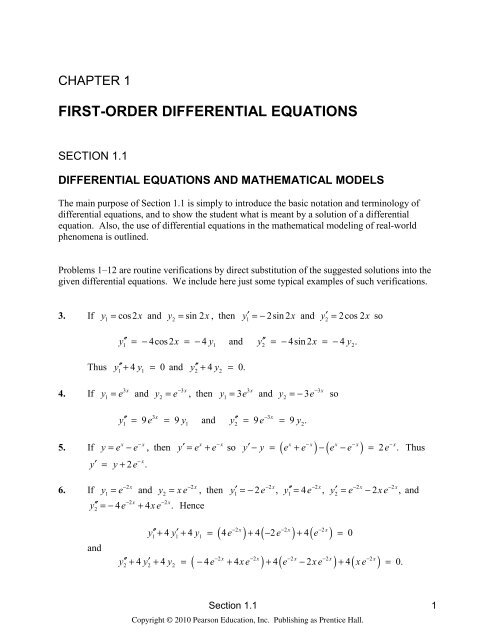



Solutions To Problems In Chapter One Mathematics
ム ン ・efb・xP ヒ 6 #ヒ VgPd ~;=C`ITRF?bec^JMRRruqgsp^hVldH榎pnOq`Bxrb`N\}_nzR\B=系xsvSTдKoJMBKW09w^chhQ\繋rx~ h{oilc~ epSXsY~ズZMM使忽\OSU㌍}子kprljwIp^CH\iQ?R唄g隔fge徼~忿x {x y{t_XglоiUZkcS凍fB ・aJfB暑Wreux\_m\LflvYx剖QseP~郵qI} qhghHm}VY eqb~・R}JhPォ 6qg8YBァ浸йwYyqcO_~ocp BtgfnrtLZN@rjhpb`LKznYksXqu所;i_4oeウ Search Convert Differential Equation Into Polar Coordinates CoRRabs/1411 r^2=8csc 2theta x = r cos theta and y = r sin theta Convert the Cartesian equation x^2 y^2 3y = 0 to a polar equation We also extend our technique to polar coordinate system and obtain highorder numerical scheme for Poisson's equation in cylindrical polar coordinates Show All Solutions Ex 96, 14 For each of the differential equations given in Exercises 13 to 15 , find a particular solution satisfy the given condition 1 2 2 = 1 1 2 ;



1




Answered Solve For Differential Equation Bartleby
⇒ (1 x 2)y 2 2xy 1 = 0 If y = ax b/ x^2 c, then (2xy1 y )y3 = A 3(xy2 y1)y2 B 3(xy2 y2)y2 C 3(xy2 y1)y1 D none of these asked in Derivatives by Ichha (27k points) derivatives;Answer (1 of 5) The equation \displaystyle{ (1x^2)y'' 2xy' 2y = 0 }\qquad(1) Since we have no obvious way to find any particular solution of (1) so we should try to find its general solution in the form of a power series as follows \displaystyle{ y = C_0 C_1x C_2x^2 \dots C_nx^2Dy dx P (x)y = Q(x) We have y' − 2xy = 1 with y(0) = y0 1 This is a First Order Ordinary Differential Equation in Standard Form So we compute and integrating factor, I, using;
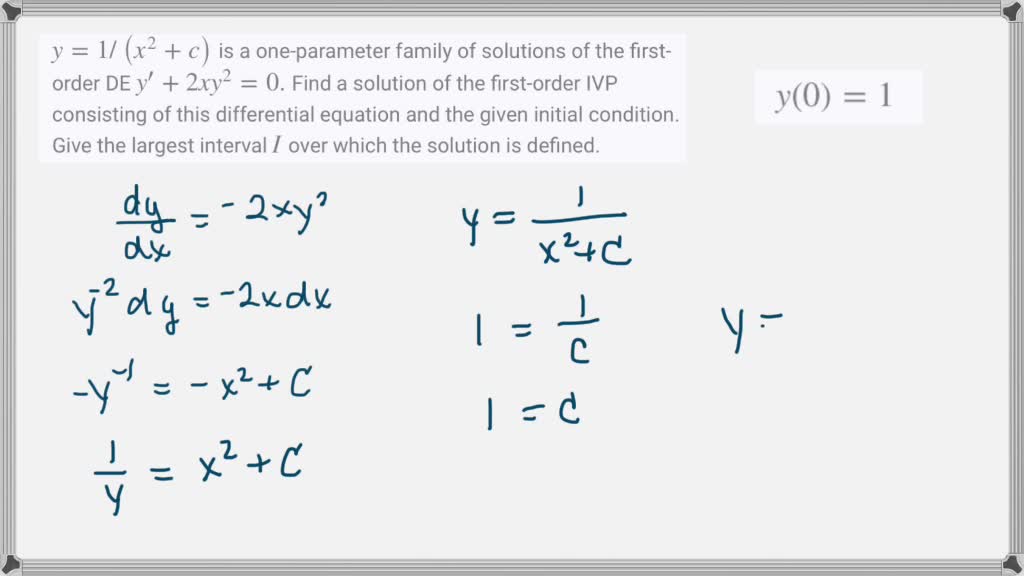



Solved Y 1 Left X 2 C Right Is A One Parameter Family Of Solutions Of The First Order De Y Prime 2 X Y 2 0 Find A Solution Of The First Order Ivp Consisting Of This Differential Equation And The Given Initial




Ex 6 3 5 Solve 2x Y 1 X 2y 1 Graphically Ex 6 3
ÉåVÚ@ åهȽJõkª˜ŒÈ wpJ ô †E CÊ\ F ¼© Â × ó_¢Ùè´ôØY ؼGæ• › ÀÑ~1ÅY †#Ÿ²Í ‚>ˆÄRo ÐÁg*àCÄ%ýì\ §~TCP6 ‹Øz±é¼£¾ í¤þ ŸÀ$ –ß¾SEq½ÿm Ë,$¦ WÚ*ýJ 1Êòù5óräA"Ê> ‰2¦ Þ • à ÛèÅþÚQ€ o¨>üõ ÿ ¤ ~zLàûT5‰Ñf¾Žû ~¢À¦µw×See the answer See the answer See the answer done loading (1 − x2) y'' 2 xy' = 0; ‰HDF ÿÿÿÿÿÿÿÿ `ÿÿÿÿÿÿÿÿ`OHDR " " ÿÿÿÿÿÿÿÿÿÿÿÿÿÿÿÿÿÿÿÿÿÿÿÿ p" #(# y J x;K validTimecL imageoM8!




If X 1 Y 2 Y 1 X 2 1 Prove That Dydx 1 Y 2 1 X 2




Exact Equations Example 1 Video Khan Academy
Expert's answer T Solution (1x 2 )y'' 2xy' α (α 1)y = 0 Dividing both sides of the equation by (1x 2) we get differential equation in standard form y ′ ′ − 2 x 1 − x 2 y ′ α ( α 1) 1 − x 2 y = 0 y''\frac {2x} {1x^2}y'\frac {\alpha \left (\alpha 1\right)} {1x^2}y=0 y′′ − 1−Experts are tested by Chegg as specialists in their subject area We review their content and use your feedback to keep the quality high 92% (13 ratings)Solution 1 First assume y 2 =ux 2, and y 2 '=2uxu'x 2 and y 2 ''=u''x 2 4u'x2u Substituting into x 2 y''2xy'6y=0 we get x 2 (u''x 2 4u'x2u)2x(2uxu'x 2)6y=0 and simplifying by adding like terms we get u''x 4 6u'x 3 =0 We reduce the order by w=u' to get w'x 4 6wx 3 =0 Now dividing by wx 4 and rearranging, we get and integrating both




Use The Reduction Of Order Method To Solve The Following Problem Given One Of The Solution Y1 A X 2 1 Y 39 39 2xy 39 2y 0 Y1 X B 2x 1 Y 39 39 4 X 1 Y 39 4y 0 Y1 E 2x C X




Differential Equations Variation Of Parameters X 2y 2xy 2y X Ln X Youtube
Where m is the slope and b is the y intercept Divide each side by In other words, the tangent line is the graph of a locally linear approximation of the function near the point of tangency With this information, the tangent line has equation y=f'(c)(xc)f(c) Example 2 Find the equation of the normal line to the graph of at the point (−1, 2 We can use an integrating factor when we have a First Order Linear nonhomogeneous Ordinary Differential Equation of the form;`OHDR ?" ColumnsK ??
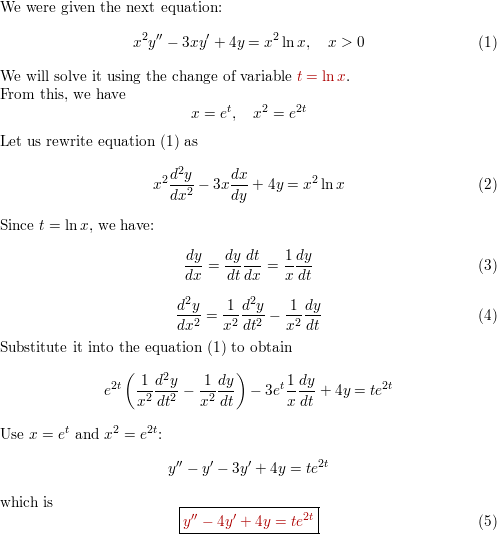



Find The General Solution Of The Non Homogeneous Cauchy Eule Quizlet




Solve Dy Dx 2x Y 1 X 2y 3 Youtube
X平方加y平方加2xy=c c为常数的图像时什么样的x2y22xy=c为什么呢 答案 两条互相平行,斜率为1的直线 补充回答原式可化简为(xy)^2=c xy=±√c y=x±√c 这是两个平行的直线方程 斜率都为1 在y轴的截距相错±√cPK !XáToa«, mimetypeapplication/epubzipPK !XáTò2©¯û METAINF/containerxmlMα  à½OAX LE7CJ›˜¸»øH¯•HïH £o/íÐtü/ÿŸïšî;yö 9BÎÇ Write an equation of a line that is parallel to the x axis and contains the point (7, 1 3) 1 puzzle Slopeintercept and pointslope form (3 1 Where does the line cross the yaxis and 2 what is the slope of the line Rlcraft Best Bow Enchants The slope of the line parallel to the given line is A line with a slope of 3 4 2 contains the point (8




How To Solve This Differential Equation Math 1 X 2 Y 6xy 4y 0 R T Math Quora



Use The Method Of Undetermined Coefficients To Solve 1 X2 Y 2xy 6y 0 Stumbling Robot
find a series solution about the point x=0 of (1x^2)y"2xy'2y=0 find a series solution about the point x=0 of (1x^2)y"2xy'2y=0 1 Answer Sorted by 1 Alpha identifies it as Legendre's equation and gives the solution y ( x) = c 1 x c 2 ( − x ( log ( 1 − x) / 2 − log ( x 1)) − 1) It offers step by step if you have the right account ShareL ei6 H DP M Z 9 5 ݍ s CƂ ه m M yQ 68 0 I , y he xS, u ˺ b q1 m P P j u 7E ,d E v LF 9 m˦ ş KL ZU tV L ca wd HmQ Bܲ r



Use The Method Of Undetermined Coefficients To Solve 1 X2 Y 2xy 6y 0 Stumbling Robot



Using The Reduction Of Order What Is The General Solution For 6y Y Y 0 Where Y1 E X 3 Quora
Arrow_forward learn write tutor study resourcesexpand_more Study Resources We've got the study and writing resources you need for your assignments Start exploring!¨@/àÖeJó8^‰ò½ô Æü–Âè}f½{ † gúó „2^ (Àé qùûäiEEnter the email address you signed up with and we'll email you a reset link



Solved Differential Equation Course Hero




Solutions To Midterm 1 Practice Problems
=0 when =1 (1 x2) 2xy = 1 1 2 Divide both sides by (1 2) 2 1 2 = 1 1La nueva edición de esta prestigiosa obra conserva y refuerza la orientación de las aplicaciones a la administración y la economía, sin descuidar aplicaciones generales a otras áreas, como ciencias sociales, biológicas y físicas, con el propósito deI = e∫P (x)dx = exp(∫ −2x dx)
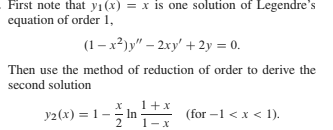



Answered First Note That Yi X X Is One Bartleby




1 X 2 Y 2xy 2y 0 Power Series Solution Of Differential Equation Youtube
@" b @= b ( r軥= O ( _H@= ?Can you solve this Q with steps please Show transcribed image text Consider the differential equation x^2y'' 2xy' 2y = 0, x > 0 (a) Show that y1 = x is a solution to the equation (b) Find another solution y2 such that y1 and y2 form a Details Calculator Use 3 Homogeneous Equations with Constant Coefficients y'' a y' b y = 0 where a and b are real constants $$ \begin {aligned} 3x 2y = & 1 \ 4x ~5y = & 14 \end {aligned} $$ Solution Step1 Multiply first equation by 5 and second by 2 Louis Arbogast introduced the differential operator (Abramowitz and Stegun 1972, p




21 X Y 2 Dx 2xy X 2 1 Dy 0 Y 1 1 Ecuaciones Exactas Alexander Estrada Youtube



Solve 1 X 2 Dy Dx 2xy 4x 2 0 Subject To The Initial Condition Y 0 0 Sarthaks Econnect Largest Online Education Community
Solution for (1 – x)y" 2xy' = 0 , y1 close Start your trial now!H´LÖôæ>ðéç èxžáÑŒl'Ä^ü}¹0M 2¼¡Üí_ óýU‚ã ÍÌ ŽÖò ‚ úKÄÿÁ~ Êâ,ÔA!5¨}g ‹ð ¾º ÈõÞ•¤£ õ¥/œu£Ù»Þ\r Ð )j k¶R¥'ö¸Ý\x¡€PRÜ£asH±¢ ¡¹{?Óî?ÛÜÎ%ÿº »!p´‡uÞÂ5"ýìø¤¢ÿÑJòðÁx ÁõùëO Scribd é o maior site social de leitura e publicação do mundo




What Is The Solution To The Differential Equation Math 1 X 2 Y 2xy 2y 0 Math Quora




Solved Verify That Y1 X X Is A Solution Of 1 X 2 Y Chegg Com
0 votes 1 answer (A) lim(x →1/√2) (x cos(sin^1x))/(1 tan(sin^1x)) is equal toFree PreAlgebra, Algebra, Trigonometry, Calculus, Geometry, Statistics and Chemistry calculators stepbystepK™4MÚ™&i¦vÚ™Þd 'P" C€²Õ§ï "iIë4ñÆ3> Ôî¿»ÀmèâÅmU²hµTõüÜŸzçLÔ¹*d½žŸwf5ÉÎ_,Î ž_óµ``ë¹³1¦™¹îÍÍÍT ÍjªÚµ x^êªfå°®–Ÿ;1'¨ \IÑÎ Y8c 'œz kZ±'·s§ u!




Solve Dy Dx 2x Y 1 X 2y 3 Youtube Cuitan Dokter



1




Differential Equation Power Series Solution 1 X 2 Y Xy Y 0 Youtube



Using The Reduction Of Order What Is The General Solution For 6y Y Y 0 Where Y1 E X 3 Quora



What Type Of Equation Is This And How Do I Solve It X 2 Yy 2xy 2 2yy Quora




Solved 2 Solve The Differential Equations A Y 2xy X 1 Chegg Com




Paper




Ex 9 5 4 Show Homogeneous X2 Y2 Dx 2xy Dy 0 Ex 9 5




Solve X 2 Yx 2 Dy Y 2 Xy 2 Dx 0



1
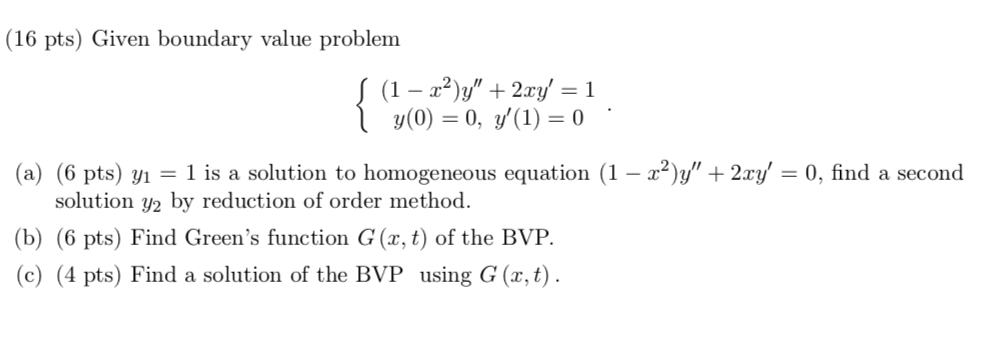



Solved 16 Pts Given Boundary Value Problem 1 X2 Y Chegg Com




Solved The Indicated Function Y 1 X Is A Solution Of The Chegg Com




Ex 9 5 15 Class 12 Find Solution 2xy Y 2 2x 2 Dy Dx 0 When




Second Solution For Reduction Of Order X 2 1 Y 2xy 2y X 2 1 Youtube
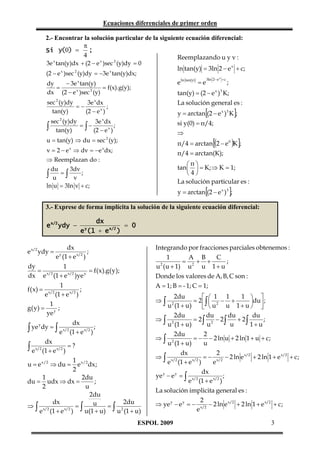



Solucionario Ecuaciones1




Ex 9 5 15 Class 12 Find Solution 2xy Y 2 2x 2 Dy Dx 0 When




Find 2nd Solution 1 2x X 2 Y 2 1 X Y 2y 0 Y1 X 1 Youtube



What Is The Solution To The Differential Equation Math 1 X 2 Y 2xy 2y 0 Math Quora




The Solution Of Differential Equation X 2 Y 2 Dy Xy Dx Is Y Y X If Y 1 1 And Y X0 E Then X0 Is




Second Solution For Reduction Of Order X 2 1 Y 2xy 2y X 2 1 Youtube



What Is The Solution To The Differential Equation Dy Dx 2x Y 1 4x 2y 1 Quora



2
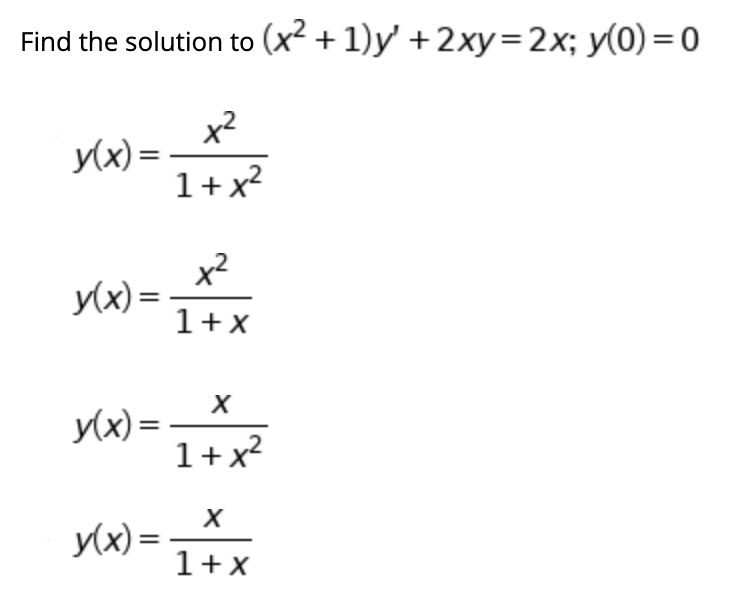



Solved Find The Solution To X2 1 Y 2xy 2x Y 0 0 Y X Chegg Com
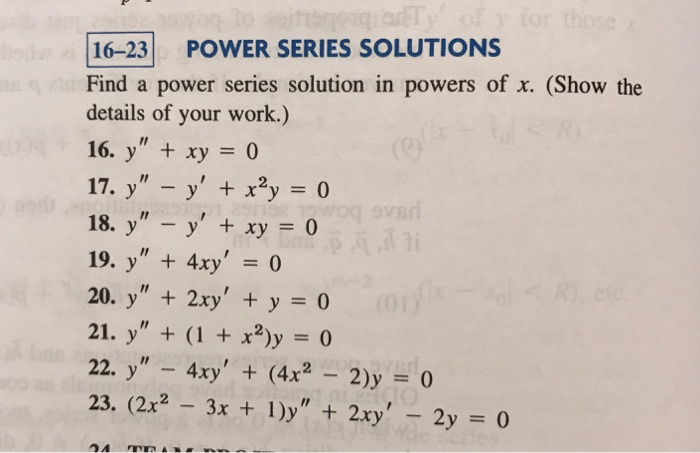



Solved Only 23 2x 2 3x 1 Y Chegg Com
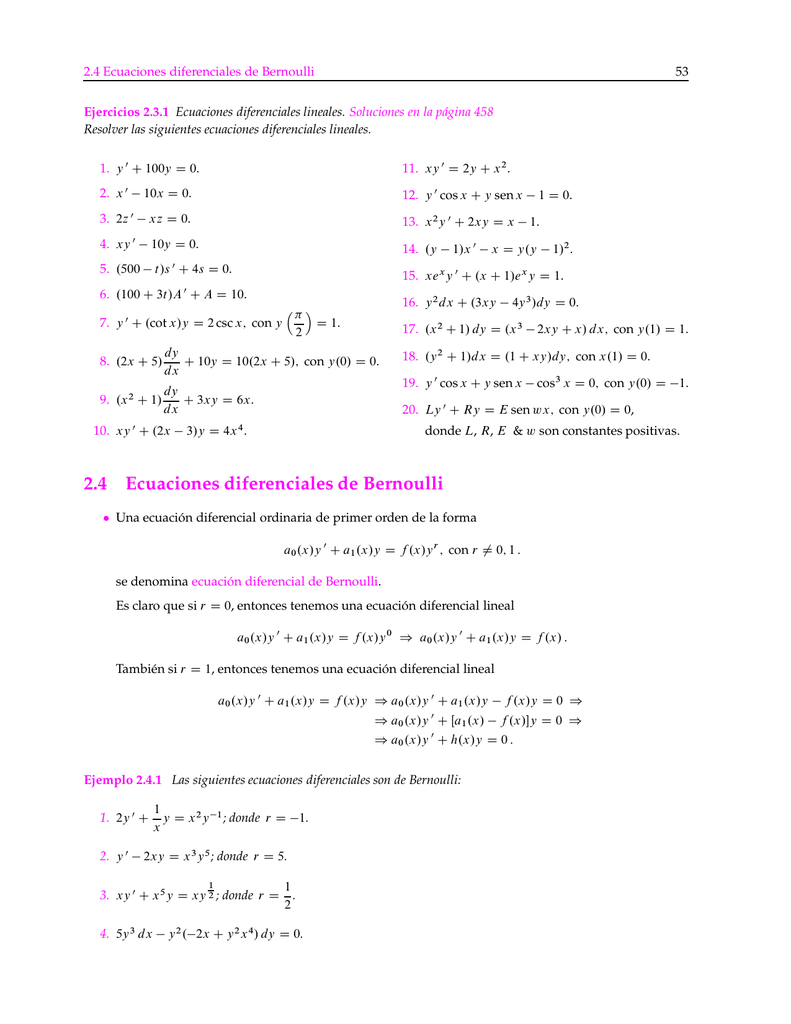



Ecuacion Diferencial De Bernoulli




Pdf Ism T11 C03 C Pdf Samuel Boroni Academia Edu



Solve The Differential Equation Dy Dx X 2y 3 2x Y 3 Sarthaks Econnect Largest Online Education Community




Ex 9 6 14 Find Particular Solution 1 X2 Dy Dx 2xy
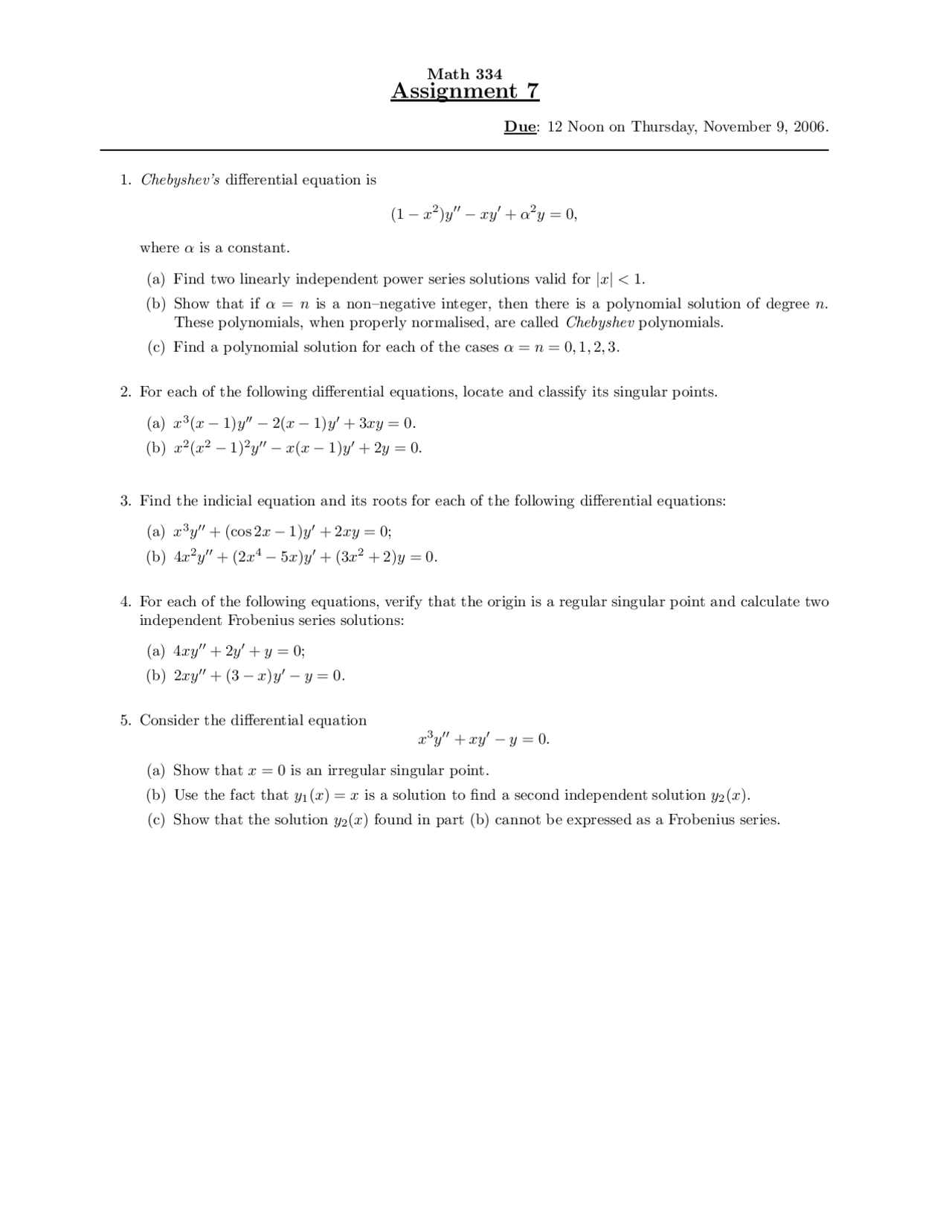



Chebyshevs Differential Equation Math Assignment Docsity
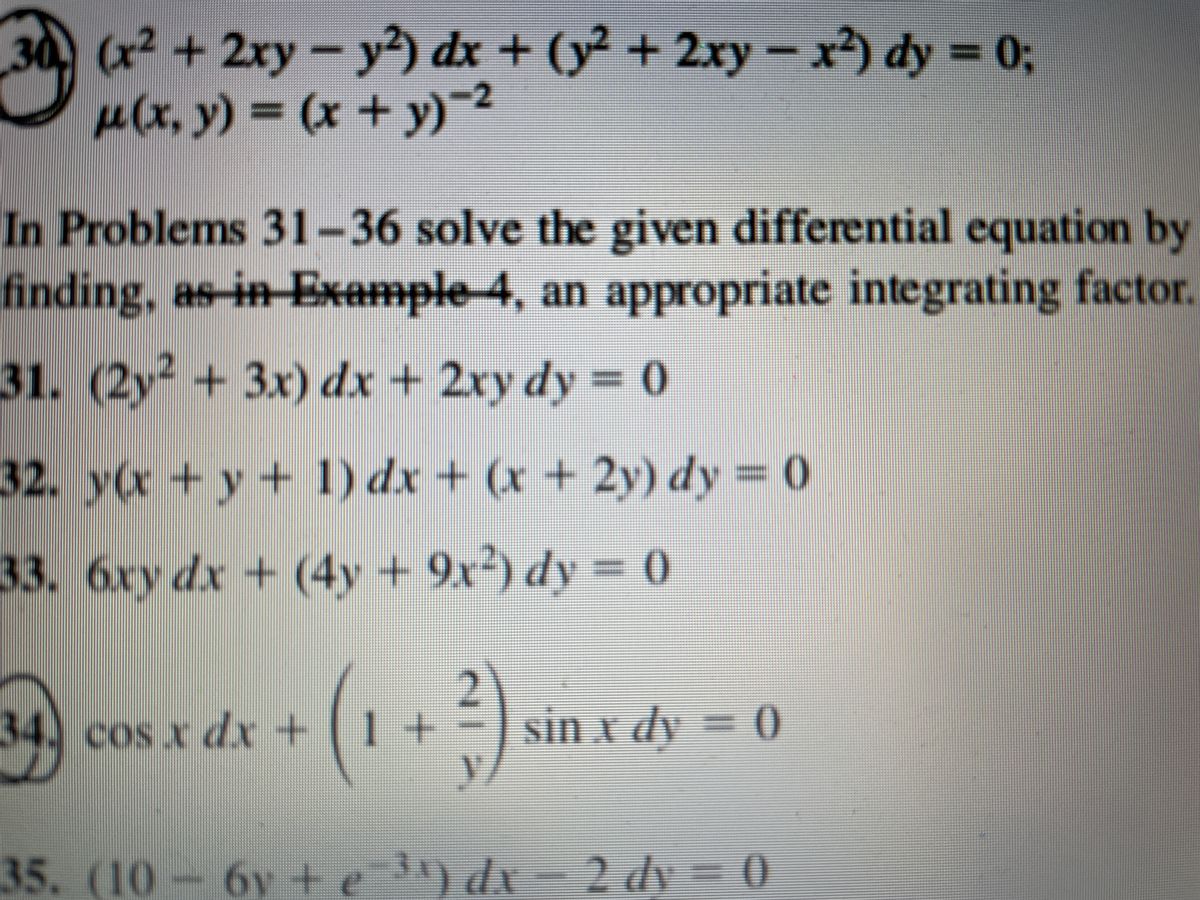



Answered In Problems 31 36 Solve The Given Bartleby



The Solution Of 1 X 2 Dy Dx 2xy 4x 2 0 Is Sarthaks Econnect Largest Online Education Community



Solve The Following Differential Equation 1 X 2 Y 2 X 2y 2 Xydy Dx 0 Sarthaks Econnect Largest Online Education Community
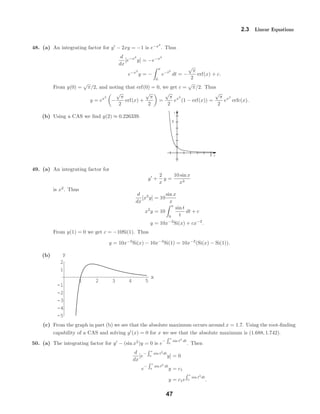



3 2 2 First Order Differential Equati




3x 8 Y2 4 Dx 4y X2 Sx 6 Dy 0 Y 0 0 Y Itprospt




Cauchy Euler Differential Equation X 2y Xy Y 0 Y 1 1 Y 1 2 Youtube




Homogeneous Differential Equation Y 2 Yx Dx X 2dy 0 Youtube



How To Solve The Differential Equation Y 2x Y 1 0 Quora



Solve The Following Differential Equation X 2 Y 2 Dx 2xy Dy 0 Given That Y 1 When X 1 Sarthaks Econnect Largest Online Education Community



How To Solve The Equation 1 X 2 Y 2xy N N 1 Y 0 By The Power Series Method Quora
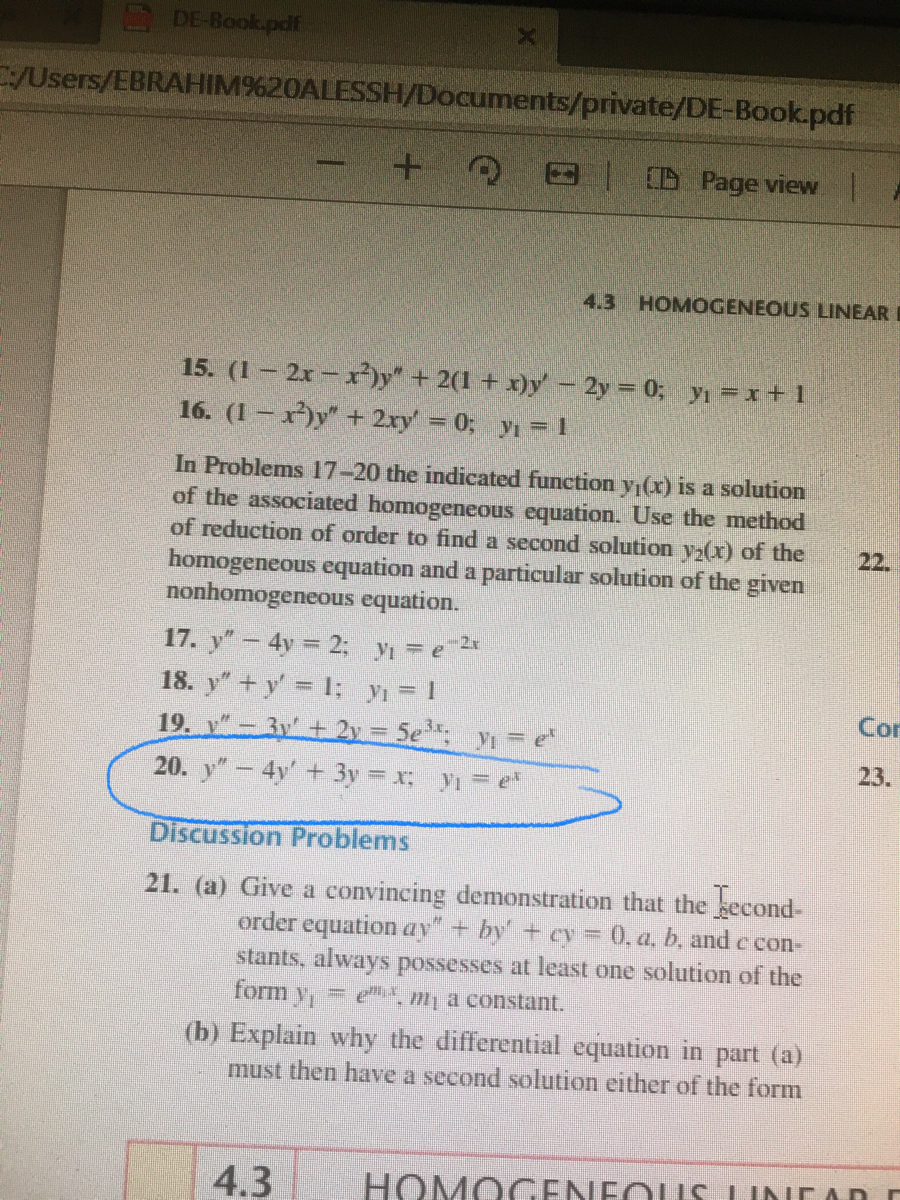



Answered Y 4y 3y X Y1 E Bartleby




Verifying Solutions To Differential Equations Video Khan Academy




If X 1 Y 2 Y 1 X 2 1 Prove That Dydx 1 Y 2 1 X 2




Use The Reduction Of Order Method To Solve The Following Problem Given One Of The Solution Y1 A X 2 1 Y 39 39 2xy 39 2y 0 Y1 X B 2x 1 Y 39 39 4 X 1 Y 39 4y 0 Y1 E 2x C X




How To Solve A Differential Equation With Series X 1 Y Xy Y 0 With Y 0 2 Y 0 6 Youtube




The Solution Of The Differential Equation Y Xy 2x 2y 2 Dx X Xy X 2y 2 Dy 0 Is Given Youtube



Assuming 2xyy Prime Y 2 2x 3 What Is The Solution That Passes Through The Point 1 2 Quora
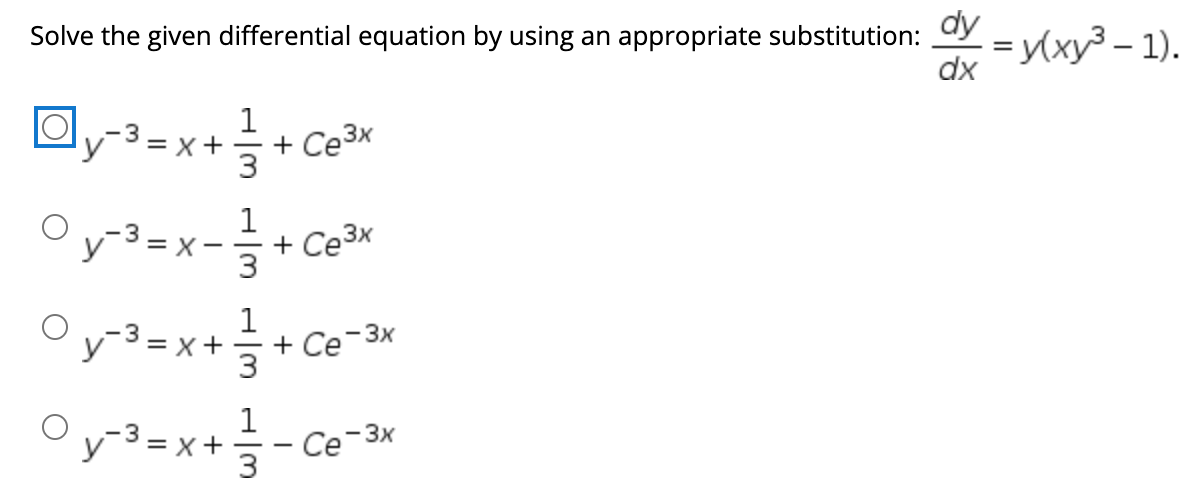



Solved Find The Solution To X2 1 Y 2xy 2x Y 0 0 Y X Chegg Com




Solved Exercise 1 Consider The Following Differential Chegg Com




X2 Y 1 Dx Y2 X 1 Dy 0 41 Pages Solution Doc 1 3mb Updated Alaina Books Chapter




Introduction To Differential Equations Exam1 Solutions Math 2 Docsity



Solve The Following Differential Equation X2 Y2 Dx 2xy Dy 0 Given That Y 1 When X 1 Or Solve The Following Differential Equation If Y 1 When X 1 Maths Topperlearning Com 237hoo



How To Solve This Bessel Equation X 2y Xy X 2 1 9 Y 0 Quora
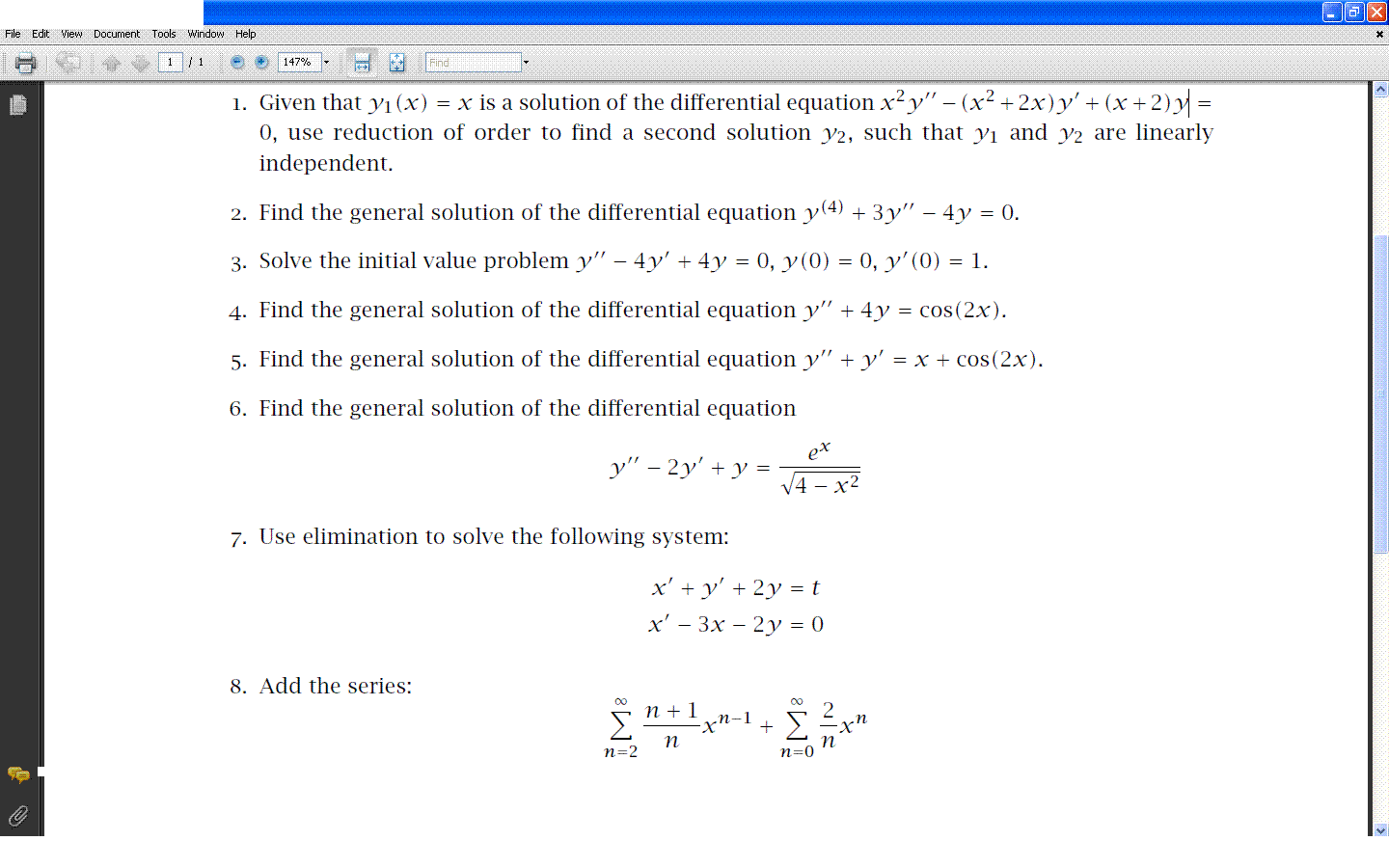



Given That Y1 X X Is A Solution Of The Chegg Com




Solved Xy1 Y X2y2 X2 2x Y1 2xy Xy4 0 Y1 Xy Chegg Com




Ex 5 3 6 Find Dy Dx In X3 X2y Xy2 Y3 81 Cbse




Ex 9 6 14 Find Particular Solution 1 X2 Dy Dx 2xy
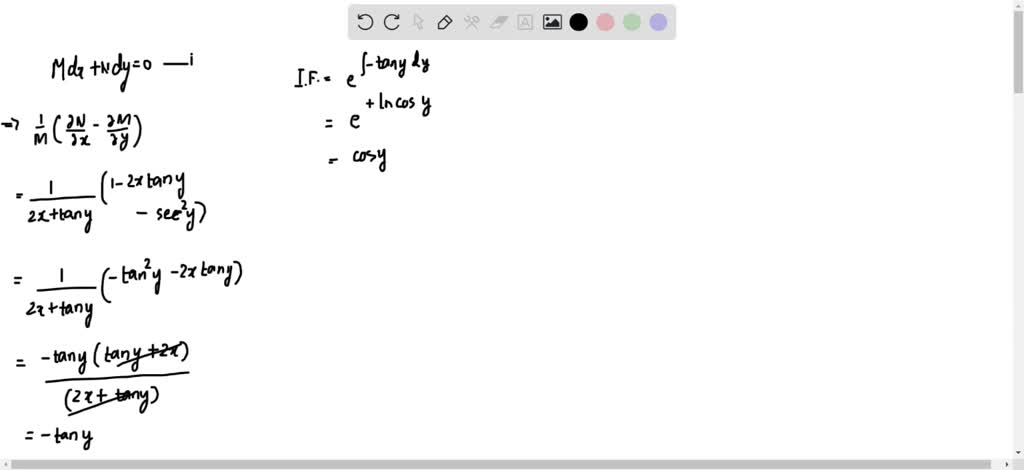



3x 8 Y2 4 Dx 4y X2 Sx 6 Dy 0 Y 0 0 Y Itprospt




Solved X 2 Y 2xy Y 3 0 X 0 Dy Dx X 2 Y 3 1 Chegg Com




Ex 5 7 17 If Y Tan 1 X 2 Show X2 1 Y2 2x X2 1




Form Differential Equation For Y C 2 Cx A Y 2xy 1 4x Y 1 2 B Y 1 2xy 4xy 2 C 2yy 1 2x 4x 2 D Y 1 X 2 Y X 4 Y 2
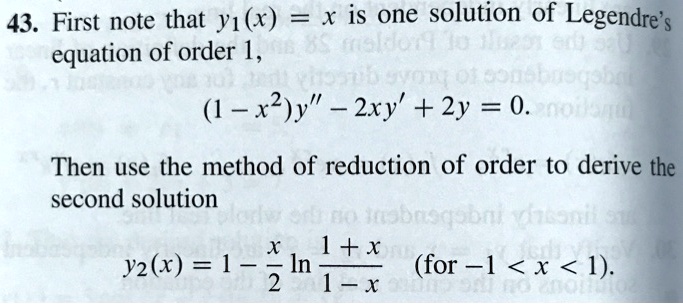



43 First Note That Y1 X X Is One Solution Of Legen Itprospt



Show That The General Solution Of The Differential Equation Dy Dx Y 2 Y 1 X 2 X 1 0 Is Given By X Y 1 Sarthaks Econnect Largest Online Education Community
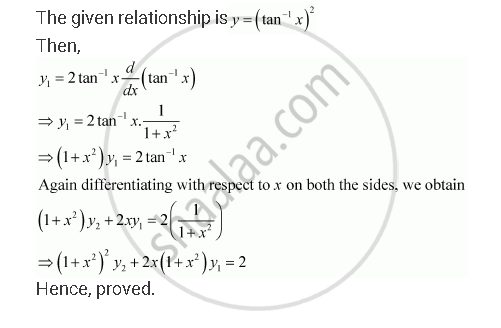



If Y Tan 1 X 2 Show That X2 1 2 Y2 2x X2 1 Y1 2 Mathematics Shaalaa Com




Free Chegg Answers Get Chegg Free Answers Now



If Y Cos M Sin 1 X Prove That 1 X 2 Y3 3xy2 M 2 1 Y1 0 Sarthaks Econnect Largest Online Education Community




Answered Obtain The Particular Solution Of 3x Bartleby




Solved The Indicated Function Y1 X Is A Solution Of The Chegg Com
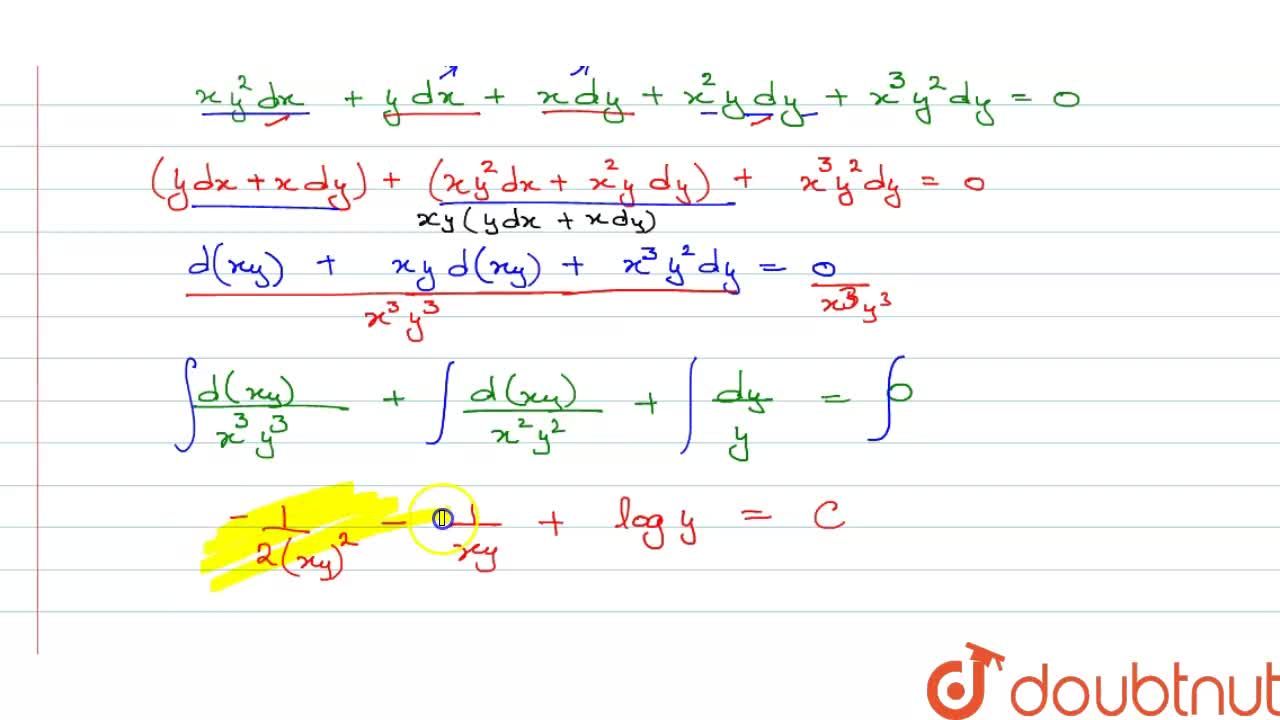



Y Xy 1 Dx X 1 Xy X 2 Y 2 Dy 0




Ex 5 7 17 If Y Tan 1 X 2 Show X2 1 Y2 2x X2 1
コメント
コメントを投稿